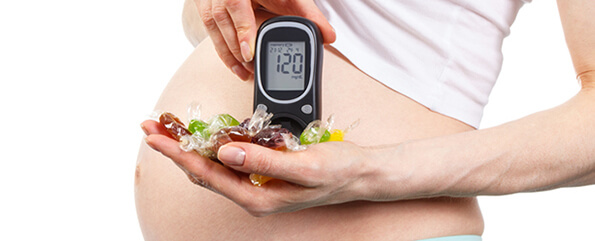The purpose of this project is to determine whether glucose metabolism can be improved by administering a substance (nitric oxide donor) normally released by muscle during exercise.
Official Title
Contraction Mediated Glucose Uptake as a Therapeutic Target in Type 2 Diabetes
Conditions
Diabetes Mellitus, Type 2
Study Type
Interventional
Study Design
Treatment, Randomized, Single Blind, Placebo Control, Crossover Assignment, Pharmacokinetics/Dynamics Study
Further Details
Aim 1: To determine whether acute infusion of sodium nitroprusside, an NO donor, increases leg glucose uptake at rest in patients with type 2 diabetes.
Twenty male type 2 diabetic patients aged between 30 and 60 years will be recruited from our clinic and through advertisement. The inclusion criteria:
- non-smokers
- free of overt coronary disease (stress ECG)
- body mass index < 35 kg.m-2
- fasting plasma glucose > 7 mmol.L-1 and / or post 75 gm oral glucose load plasma
- glucose levels of > 11.1 mmol.L-1
- unmedicated (diet controlled)
The leg blood flow (thermodilution) and glucose uptake responses (arterial-venous differences) to three cumulative doses of sodium nitroprusside (0.1, 0.3 and 0.6 ug.kg-1.min-1, 10 mins per dose) infused into the femoral artery using techniques established in our laboratory will be assessed.
Doses are based on our extensive unpublished observations and have been calculated to lie on the linear part of the dose-response curve and to induce local and not systemic hemodynamic effects. As a control we will also assess responses to the nitrate independent vasodilator, Verapamil (Isoptin) (1, 3 and 6 ug.kg-1.min-1 Doses).
Verapamil is a calcium channel antagonist which causes vasodilatation by direct actions on the smooth muscle. Doses will be titrated to give similar blood flow responses and the two drugs will be administered in randomized order with a 60 min wash-out period. Verapamil doses will be determined in pilot experiments. Vastus lateralis biopsies will be performed at baseline and after the highest dose of each drug and cGMP and GLUT-4 translocation measured.
A single Vastus lateralis biopsy will be performed as a comparison against type 2 diabetics.
Significance: This study will determine whether acute NO supplementation stimulates muscle GLUT-4 translocation and glucose uptake in patients with type 2 diabetes.
Pilot Study: To determine whether oral nitrates increase exhaled NO levels in healthy volunteers & to compare isosorbide mononitrate (ISMN) with pentaerythritol tetranitrate (PETN) to determine which drug is more effective in increasing exhaled NO.
Fifteen healthy male volunteers (as determined via a medical screening) aged between 18 and 65 years will be recruited through advertisement. The inclusion criteria for healthy controls will be:
- non-smokers
- free of overt coronary disease (ECG)
- body mass index < 30 kg.m-2
- fasting plasma glucose < 6.1 mmol.L-1
- unmedicated
Blood samples will be obtained and an oral glucose tolerance test (OGTT) performed. Baseline exhaled nitric oxide (NO) and pulmonary blood flow will be measured in collaboration with Dr Bruce Thompson from the Alfred Respiratory Department.
Sodium nitroprusside (SNP) is a known NO donor and will be used as a positive control. Following baseline measurements participants will receive an intravenous (forearm vein) infusion of SNP (titrated from 0.3ug/kg/min to a maximum of 3 ug/kg/min over 30 minutes). Blood pressure will be monitored throughout using an automated sphygmomanometer. Post infusion exhaled NO and pulmonary blood flow will be measured.
Participants will then commence the second phase of the study to determine whether ISMN and PETN increase exhaled NO levels and to determine which drug is more potent in this regard.
Visit 2, 3 & 4: Participants will receive each of the following study medications in a randomised Latin square design:
- Placebo administered once on the morning of Visit 2, 3 or 4,
- extended release ISMN mononitrate (120mg ) administered once on the morning of Visit 2, 3 or 4; &
- pentaerythritol tetranitrate (160mg administered once on the morning of Visit 2, 3 or 4).
There will be a 7-day wash-out period between each treatment/visit. Participants will undergo repeated measures of exhaled NO, pulmonary blood flow and OGTT three hours after each study drug has been administered.
Blood will be taken prior to and every hour after the participant has taken each drug for measurement of NO metabolites (e.g. nitrite/nitrate, nitrosothiols, nitrosohemoglobin). Nitrate drugs are occasionally associated with headache and dizziness. Headaches can be treated with paracetamol.
Endpoints at baseline and post treatments will be:
- Post 75g oral glucose load
- Exhaled NO levels
- Pulmonary blood flow
- Significance: Once the most effective NO donor has been determined it will be utilized in the chronic nitrate study described in Aim 2.
Aim 2: To determine whether chronic nitrate therapy for 12 weeks improves glucose tolerance and HbA1c in patients with type 2 diabetes.
Twenty male type 2 diabetic subjects aged between 30 and 60 years and meeting the inclusion criteria specified in Aim 1 will be recruited from our clinics and through advertisement. Patients will be randomized to 12 weeks of treatment with both long-acting nitrate therapy (isosorbide mononitrate 60mg daily, Imdur) and placebo (cross-over design).
Primary endpoints will be:
- glycated haemoglobin (HbA1c)
- whole body glucose uptake at rest (stable glucose tracer methodology, (39-41))
- whole body glucose uptake after (0-2 hrs) a 75 gm oral glucose load (tracer methodology)
- skeletal muscle cGMP and GLUT-4 translocation (vastus lateralis muscle biopsy before and after glucose load)
- skeletal muscle glycogen, lactate, phosphocreatine, creatine and ATP Significance: This study will determine whether chronic nitrate therapy increases GLUT-4 translocation / glucose uptake and has beneficial effects on glycaemic control in patients with type 2 diabetes.
Aim 3:
To determine whether acute infusion of AICAR, an AMP analogue, increases leg glucose uptake at rest in patients with type 2 diabetes.
Twenty healthy males and twenty male type 2 diabetics aged between 30 and 60 years will be recruited from our clinic and through advertisement. The inclusion criteria for the diabetics will be:
- non-smokers
- free of overt coronary disease (stress ECG)
- body mass index < 35 kg.m-2
- fasting plasma glucose > 7 mmol.L-1 and / or post 75 gm oral glucose load plasma
- glucose levels of > 11.1 mmol.L-1
- unmedicated (diet controlled)
The leg blood flow (thermodilution) and glucose uptake (arterial-venous differences) response to a 60 minute intra-femoral infusion of AICAR (1 mg.kg-1.min-1, Clinalfa, Switzerland) using techniques established in our laboratory will be assessed. As a control we will also measure responses to vehicle (saline) infusion prior to commencing the dose response curve (60 min).
Plasma free fatty acids, glycerol, triglycerides and lactate will be determined and blood gases will be measured to assess respiratory quotient. Vastus lateralis biopsies will be performed at baseline and after AICAR and the following parameters quantitated:
- AMPK activity
- nNOS phosphorylation
- NOS activity
- GLUT-4 translocation
Study Start
October 2002
Eligibility & Criteria
Patients with type 2 diabetes
- Non-smokers
- Free of overt coronary disease (stress ECG)
- Body mass index < 35 kg.m-2
- Fasting plasma glucose > 7 mmol.L-1 and / or post 75 gm oral glucose load plasma
- glucose levels of > 11.1 mmol.L-1 Unmedicated (diet controlled)
Healthy controls
- Non-smokers
- Free of overt coronary disease (ECG)
- Body mass index < 30 kg.m-2
- Fasting plasma glucose < 6.1 mmol.L-1
- Unmedicated
Total Enrolment
Contact Details
Australia: Department of Health and Ageing Therapeutic Goods Administration
All content and media on the HealthEngine Blog is created and published online for informational purposes only. It is not intended to be a substitute for professional medical advice and should not be relied on as health or personal advice. Always seek the guidance of your doctor or other qualified health professional with any questions you may have regarding your health or a medical condition. Never disregard the advice of a medical professional, or delay in seeking it because of something you have read on this Website. If you think you may have a medical emergency, call your doctor, go to the nearest hospital emergency department, or call the emergency services immediately.







